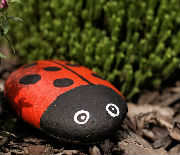
Fleas can be more than just a nuisance – they can significantly impact your cat’s health if not detected and treated early. While most cat owners are familiar with common signs that a cat has fleas like scratching and itching, there are subtle indicators that are often overlooked until a full-blown infestation occurs.
Knowing how to tell if your cat has fleas can make a crucial difference in protecting your pet’s well-being. Therefore, we’ll dive into the hidden signs of fleas on cats, helping you spot them early and keep your cat happy and flea-free.
Table of Contents
1. Hair loss
A bald spot at the base of the tail is a sure indicator that your cat has fleas. If your pet is biting and scratching itself to the point of losing hair or injuring its skin, this may indicate a severe flea infestation. In such cases, it is advisable to consult your veterinarian to exclude medical issues.
Hair loss, along with skin irritation in cats, can be a symptom of flea allergy dermatitis, which can affect both animals and humans. When a flea feeds on blood, it injects saliva into the host. If you or your cat are allergic to this saliva, the immune system may respond with an allergic reaction, resulting in a rash that is often painful and itchy.
To treat the condition and bring your cat’s luscious fur back, get rid of fleas in bedding, carpets, and furniture, and apply flea treatment to your cat’s fur directly. A course of antibiotics may be needed if your vet advises that the infection is serious.
Learn What Kills Fleas in Carpet Naturally
2. Bumps and lesions
Bumps and lesions on the skin are another sign of fleas on cats and can be painfully itchy. Flea bites can cause irritation and inflammation, leading to redness and discomfort for your pet. When cats feel itchy, they instinctively scratch the affected areas, which further irritates the skin. This scratching triggers the release of histamine which causes inflammation.
Severe itching can result in deep scratches and even bleeding, making your cat’s skin vulnerable to further complications. You may also notice your pet chewing or licking the irritated spots, potentially causing these wounds to become moist and ooze, increasing the risk of infection.
3. Small white worms in the poop
If you find white worms in your cat’s faeces, it likely got infected with Dipylidium tapeworms after accidentally eating a cat flea larva. The white pieces you see are, unfortunately, only segments of the parasites that need to be treated with medication.
If you suspect that your cat has a tapeworm infection, it’s important to take it to a veterinarian for a proper diagnosis and treatment. If your cat has fleas, the veterinarian will likely check for tapeworms as well, since a tapeworm infestation often occurs alongside a flea problem.
4. Pale gums
The most common reason for pale gums in cats is anaemia. Fleas feed on your cat’s blood and, therefore, could cause low blood pressure and a decreased blood flow to the cat’s organs – thus leading to anaemia and pale gums. In fact, the colour of your kitten’s gums can tell you a lot about its health state and should be paid close attention to.
Read more: How do I know if my dog has fleas?
5. Changes in behaviour
Changes in behaviour are another way to tell if your cat has fleas. If you notice your feline is lazier than usual or barely moving around, these could be symptoms of fleas on cats. Muscle loss and lethargy are symptoms of cat anaemia, which can be caused by fleas.
Additionally, a cat suffering from a flea infestation may show signs of unease, irritability, or discomfort. If your pet is rubbing its head and body on walls and floors frantically, or growling, it is a clear sign that something is driving it mad. Your cat might become increasingly agitated and find it difficult to regain its typical sense of calm, which can even hinder its ability to relax and get restful sleep.
Read more: How to Tell if You Have Fleas in Your Home
6. Cat Won’t Stop Cleaning Itself
Flea saliva contains histamine and causes itchiness, which your cat is trying to reduce by constantly grooming itself. If it’s driving you insane, imagine what it does to your cat!
7. Cat is Avoiding Your Room
Have you noticed your cat purposefully staying away from some place it used to love? This change of behaviour could indicate that the area is a hotspot for fleas. Consider a flea treatment to get rid of cat fleas in all carpets, beddings, upholsteries and floorboards!
Check also:
How Effective are Cats in Pest Control?
Meet Tom – The Purr-fect Answer to London’s Squeaking Problem
How to get rid of fleas on cats quickly
If you find fleas on your cat or inside your home, it is important to address the situation promptly. Fleas reproduce rapidly, and can easily turn into a severe infestation, leading to complications for both you and your furry friend. Here is what you have to do to get rid of fleas quickly:
1. Bath your cat
One of the initial steps to eliminate fleas is to bath your pet. Using lukewarm water, or a combination of water and a gentle soap, can help remove fleas from your pet’s fur and skin. If you consider to use of a flea shampoo or similar product, it is best to consult your veterinarian beforehand. Don’t forget to check the ingredients and ensure it is a cat-safe flea shampoo.
2. Comb your cat’s hair with a fine-tooth flea comb
Use a flea comb to remove fleas from your pet’s fur. Dip the comb in a solution of water and dish soap to capture the fleas and prevent them from jumping. The closely spaced teeth on the flea comb are specifically designed to trap fleas while allowing your cat’s fur to pass through easily.
Additionally, flea combs are useful for removing flea faeces, also known as “flea dirt,” which looks like dark brown or black specks resembling pepper flakes. This tool can also help you remove flea eggs from your cat’s coat. You should pay attention when combing the neck and tail of your pet as these are common feeding spots for fleas.
3. Clean your cat’s bedding
While vacuuming pet bedding is an option, a hot wash is recommended. Therefore, to get rid of fleas quickly wash your cat’s bedding and toys at temperatures above 60 degrees Celsius. This will kill off the insects as well as any bacteria, dust mites, and other harmful microorganisms that may be hiding in the fabric.
4. Vacuum floors and upholstery
It is essential to thoroughly vacuum all carpets, floors, and upholstery. Pay special attention to cracks and crevices and use a crevice tool attachment to reach into tight spaces, such as between floorboards, along baseboards, and in corners. To achieve the best results, repeat this thorough vacuuming process every two days for a minimum duration of three weeks.
After each use, dispose of the vacuum dust bag outside your home to prevent the development of flea eggs and larvae.
Conclusion
If you have ever wondered how to tell if your cat has fleas, these are some absolute tell-tale signs. Cat fleas can do a lot more harm than the occasional itch, whether they damage your pet’s physical or mental health. A good master should try to make constant check-ups at the vet and apply a regular flea control routine.
Image source: Alena Ozerova/shutterstock.com










Think my cat as fleas she won’t stop grooming her self.